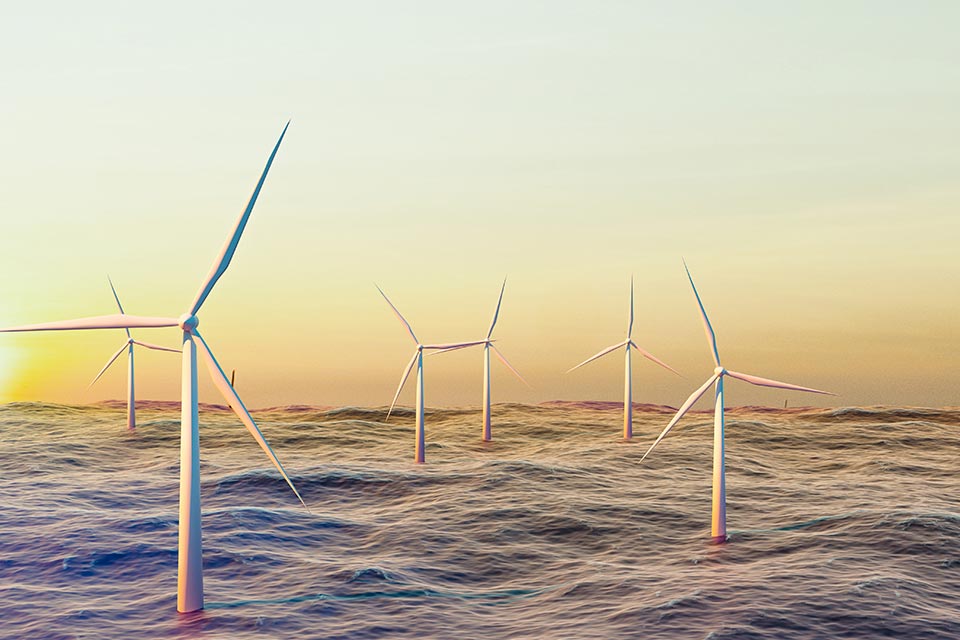As the impact of climate change becomes more evident every day, there is a growing need for advanced technologies capable of measuring and forecasting weather patterns accurately. There is also a need to develop energy generation technologies that minimize the release of greenhouse gas emissions, which is the primary cause of global warming and climate change.
In this article, we explore recent patent applications in climate tech. First, we look at a patent filing for a means to calculate energy for a renewable energy source that utilizes ocean currents. The other patent applications proposed innovative technologies for weather forecasting.
First Institute of Oceanography (FIO)
Theoretical reserve evaluation method for ocean current energy
As concerns with climate change and air pollution are increasing, the world’s interest in renewable energy continues to gain popularity. Solar and wind power are usually favored among the different forms of renewable energy but other sources are also gaining ground. One example of a less conventional source of renewable energy is the energy that can be harnessed from an ocean current.
In the patent application, the First Institute of Oceanography (FIO) explores ocean currents as a source of energy in contrast with tidal current energy.
In tidal generators, energy is harnessed from the movement of ocean waters during high tide and low tide. These tidal waves are cyclical in nature but are not a constant source of energy. On the other hand, tidal currents provide slower but continuous movements which can potentially be a more reliable source of energy.
The method proposed by FIO considers a region and depth within the ocean defined by the latitudes and longitudes of the boundary of the regions. Hydrological data, such as flow velocities and seawater densities, are measured within this region. Together with the area and depth of the region, these hydrological data are used to calculate the ocean current energy that may be harnessed from the flow of water within a region. This theoretical energy value can be used to identify the most efficient locations for building ocean current energy generators.
If implemented, this approach can lead to cost-effective and efficient ways of harnessing ocean energy, contributing towards a shift from conventional sources of energy towards more sustainable ones, and ultimately helping to mitigate the effects of climate change.
U.S. 2023/0041142 was filed on October 14, 2021 by First Institute of Oceanography (FIO). FIO is a non-profit research institute of China specializing in marine research investigations which includes tidal wave and ocean circulation dynamics as well as climate change technologies.
Teconer
Wind Speed Measurement
US20230025547 was filed on September 22, 2020 by Teconer Oy. Teconer Oy is a company based in Finland that specializes in technologies involving environmental sensors. Currently, their Road Weather Station (RWS10) only monitors road related parameters such as surface condition, water / ice layer thickness and surface temperature. With the ‘547 patent application, the capabilities of the RWS10 may include wind speed measurement in the future.
Wind speed measurement devices are not exactly new technologies. The oldest form of a wind measurement device is an anemometer which reportedly only has a maximum of 5% accuracy. It is for this reason that there is continuous effort in developing wind speed measurement devices that are more accurate than the conventional anemometer.
This patent application makes use of a single pressure sensor coupled with a wind shield for measuring the instantaneous air pressure. The wind shield acts as an air flow guide to redirect the air towards the pressure sensor. The shield ensures that only one direction is captured by the pressure sensor.
In a sample implementation, the shield only allows air coming from the bottom of the pressure sensor but prevents the air coming from the sides and above the sensor. With only one direction of the wind, measurement errors due to the other directions of the wind are avoided. In addition to the sensor and shield, a processor accompanies the pressure sensor to calculate the corresponding wind speed associated with the measured wind pressure.
The RWS10 is designed to be installed along the sides of the roads. Once the wind speed measurement device is fully implemented in the RWS10, these weather stations can be used to analyze snow creep which may warn of impending avalanches as well as provide alerts on hazardous high speed winds.
Tomorrow Companies Inc.
Real-Time Precipitation Forecasting System
US20220373713 was filed on August 2, 2022 by The Tomorrow Companies Inc. Tomorrow specializes in intelligent real-time weather forecasting which can be downloaded as an app. This patent application strengthens the company’s position in revolutionizing weather forecasting using advanced technologies.
This patent application provides a method for an automated forecasting of precipitation intensities (commonly known as rainfall intensity) by dividing a geographical area into grids. Each grid will have a corresponding precipitation intensity forecast and wind information derived from radar data.
By dividing the geographical area into grids, this method allows for more localized predictions which can be especially important in areas where precipitation can vary greatly over relatively short distances. Incorporating wind information into the initial forecasts also allows for more accurate predictions, as wind can greatly impact precipitation intensity.
Overall, this patent application presents an innovative approach to precipitation forecasting that has the potential to greatly benefit a wide range of industries and emergency response efforts. This technology can provide a vital service to farmers, transportation providers and local officials in emergency situations by providing accurate precipitation forecasts.





